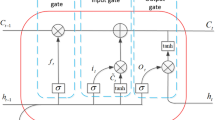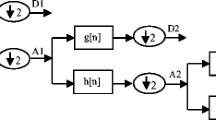Abstract
In this study, power spectrum of the EEG data and the heartbeat data obtained from 250 patients has been applied to the designed Neural network system. A backpropagation artificial neural network has been developed which contains 53 nodes in the input layer, 27 nodes in the hidden and 1 node in the output layer. In the artificial neural network inputs, the power spectral density values corresponding 1-50 Hz frequency interval of the EEG slices which has 10 seconds of time interval, the ratio of the total of the PSD values of current EEG slice to the total PSD values of EEG slice of pre-anesthesia, the ratio of the total PSD values of the EEG data to the total PSD values of the previous EEG data, and the previous anaesthetic gas ratio values have been applied and the network has been educated. The designed neural network system has been tested by using 10 data set obtained from 4 different patients. In the anesthetic gas prediction according to the anesthesia level, successful results have been obtained with the designed system. The system has been able to correctly purposeful responses in average accuracy of 94% of the cases. This method is also computationally fast and acceptable real-time clinical performance has been obtained.





Similar content being viewed by others
References
Saraoğlu, H. M., and Edin, B., E-nose system for anesthetic dose level detection using artificial neural network. J Med Syst 31:475–482, 2007.
Moerman, N., Bonke, B., and Oosting, J., Awarness and recall during general anesthesia: facts and feelings. Anesthesiology 79:454–464, 1993.
Huang, J. W., Lu, Y. Y., Nayak, A, Roy R. J., Depth of anesthesia estimation and control. IEEE transactions on biomedical engineering 46(1):71–81, 1999.
Muthuswamy, J., and Roy, R. J., The use of fuzzy integrals and bispectral analysis of the electroencephalogram to predict movement under anesthesia. IEEE Trans Biomed Eng 46(3):291–299, 1999.
Da Silva, L., EEG analysis: Theory and Practice. In: Niedermayer, E., and Da Silva, L. (Eds.), Electroencephalography Basic Principles, Clinical Applications, And Related Fields, Fourthth edition. Lippincott Williams & Wilkins, USA, pp. 1135–58, 1999.
James, C. J., Jones, R. D., Bones, P. J., and Carroll, G. J., Detection of epileptiform discharges in the EEG by a hybrid system comprising mimetic, self-organized artificial neural network, and fuzzy logic stages. Clinical Neurophysiology: Official Journal of the International Federation of Clinical Neurophysiology 110(12):2049–2063, 1999.
Iselin-Chaves, I. A., Flaishon, R., Sebel, P. S., et al., The effect of the interaction of Propofol and Alfentanil on recall, loss of consciousness, and the Bispectral index. Anesth Analg 87:949–55, 1998.
Gotman, S. Y., Pasupathy, J., Flanagan, A., Rosenblatt, D., and Gottesman, B., An expert system for EEG monitoring in the pediatric intensive care unit. Electroencephalogr Clin Neurophysiol 106(6):488–500, 1998.
Sleigh, J. W., Andrzejowski, J., Steyn-Ross, A., et al., The bispectral index: A measure of depth of sleep? Anesth Analg 88:659–61, 1999.
Nahm, W., Stockmanns, G., Petersen, J., Gehring, H., Konecny, E., Kochs, H. D., and Kochs, E., Concept for an intelligent anaesthesia EEG monitor. Med Inform Internet Med 24(1):1–9, 1999.
Witte, H., Doering, A., Galicki, M., Dörschel, J., Krajca, V., and Eiselt, M., Application of optimized pattern recognition units in EEG analysis: common optimization of preprocessing and weights of neural networks as well as structure optimization. Medinfo 8(1):833–837, 1995.
Huupponen, E., Himanen, S. L., Värri, A., Hasan, J., Saastamoinen, A., Lehtokangas, M., and Saarinen, J., Fuzzy detection of EEG alpha without amplitude thresholding. Artif Intell Med 24(2):133–147, 2002.
Litscher, G., and Schwarz, G., Is there paradoxical arousal reaction in the EEG subdelta range in patients during anesthesia? J Neurosurg Anesthesiol 11:49–52, 1999.
Yardimci, A., Ferikoglu, A., Hadimioglu, N., Microcontroller Based Fuzzy Logic Sevofluorane anesthesia control system, B Reusch (Ed.): Fuzzy Days 2001 LNCS 2206, pp. 137-147, Berlin, 2001
Freeman, J. A and Skapura, D. M., Neural network algoritms, applications, addisson- Wesley, 401p, 1992
Ferikoğlu, A., Tosun, M., Ünal, C., Saraoğlu, H., and Yardımcı, A., Control of Deep Anesthesia using backpropagation artificial neural network. IKECCOO conference, Bishkek, 2004.
Author information
Authors and Affiliations
Corresponding author
Rights and permissions
About this article
Cite this article
Tosun, M., Ferikoğlu, A., Güntürkün, R. et al. Control of Sevoflurane Anesthetic Agent Via Neural Network Using Electroencephalogram Signals During Anesthesia. J Med Syst 36, 451–456 (2012). https://doi.org/10.1007/s10916-010-9489-9
Received:
Accepted:
Published:
Issue Date:
DOI: https://doi.org/10.1007/s10916-010-9489-9




